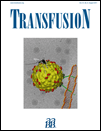Donor understanding and attitudes about current and potential deferral criteria for high-risk sexual behavior
Supported by Canadian Blood Services.
Abstract
BACKGROUND: Few donor criteria are as contentious as the deferral of men who have had sex with men (MSM). We performed an anonymous donor survey to determine attitudes toward current screening and the feasibility and acceptability of adoption of alternate donor criteria for MSM.
STUDY DESIGN AND METHODS: Donors who had successfully donated to Canadian Blood Services were randomly mailed an anonymous questionnaire several weeks after donation; there were 40,000 donors sampled, evenly split between first-time and repeat donors.
RESULTS: The response rate was 45.5%. The vast majority of donors found the current screening questions and clinic environment acceptable. Attention to clinic educational materials was poor. A total of 53% felt that the MSM criteria should be changed; many were supportive of criteria based on specific behaviors rather than a period of abstinence. Gender-neutral questions such as number of sexual partners would result in deferral of large numbers of donors.
CONCLUSION: Many donors would support a change in MSM deferral policy. Implementation of strategies based on donor attention to additional material would be challenging. Universal use of simple gender-neutral questions would result in very high donor loss and are therefore not an acceptable option. The acceptability and feasibility of various screening approaches should be explored further with both donors and advocacy groups.




